Service Alert
July 1 - Canada Day
CELA will be closed on Tuesday, July 1st for Canada Day. Our office will reopen and our Contact Centre services will resume on Wednesday, July 2nd. Enjoy your holiday!
CELA will be closed on Tuesday, July 1st for Canada Day. Our office will reopen and our Contact Centre services will resume on Wednesday, July 2nd. Enjoy your holiday!
Showing 1 - 20 of 39 items

By Jabari Asim. 2017
John Lewis wants to be a preacher when he grows up - a leader whose words stir hearts to change,…
minds to think, and bodies to take action. But why wait? When John is put in charge of the family farm's flock of chickens, he discovers that they make a wonderful congregation! So he preaches to his flock, and they listen, content under his watchful care, riveted by the rhythm of his voice. Grades K-3. 2017.
By Barry Wittenstein, Chris Hsu. 2018
After his new bride, Josephine, injured herself repeatedly in the kitchen, Earle Dickson invented a homemade adhesive bandage that eventually…
became a Band-Aid. Discusses the history of how the little bandage was mass produced, distributed, and became a popular household item. For grades K-3. 2018
By Miranda Paul. 2020
The inspiring true story of how one African woman began a movement to recycle the plastic bags that were polluting…
her community. Plastic bags are cheap and easy to use. But what happens when a bag breaks or is no longer needed' In Njau, Gambia, people simply dropped the bags and went on their way. One plastic bag became two. Then ten. Then a hundred. The bags accumulated in ugly heaps alongside roads. Water pooled in them, bringing mosquitoes and disease. Some bags were burned, leaving behind a terrible smell. Some were buried, but they strangled gardens. They killed livestock that tried to eat them. Something had to change. Isatou Ceesay was that change. She found a way to recycle the bags and transform her community. This inspirational true story shows how one person's actions really can make a difference in our world.
By Elizabeth Zunon, Miranda Paul. 2015

By Nikki McClure. 2011

By Bill McKibben. 2007
Author of Enough: Staying Human in an Engineered Age (RC 62090) contends that economic growth no longer brings wealth but…
instead generates inequality and insecurity. Addresses unsustainable production and negative effects such as environmental degradation and emotional dissatisfaction. Advocates restructuring local economies to be more self-sufficient and community oriented. 2007
By Sally Herigstad. 2007
CPA offers financial advice on managing money and getting out of debt. Includes tips on cutting expenses, prioritizing debts, reaching…
financial goals, and staying on a budget. Suggests ways to handle rent, utilities, and medical bills. Covers dealing with the IRS, creditors, and collection agencies. Lists resources. 2007
By Elisha Cooper. 2002
Explains step-by-step how milk is taken from cows and processed in a factory, where lots of things happen to it…
to produce a carton of flavored ice cream. For grades K-3. 2002
By Juliet E. K Walker, Juliet E. K. Walker. 1998
Examines African American business development from the 1600s to the 1990s. Discusses black participation in commercial real estate, finance and…
investment, manufacturing, and other sectors. Recommends resisting policies based on racial prejudice and exploring opportunities for expansion into national and global markets. Black Caucus of ALA Award. 1998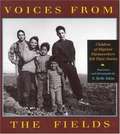
By S. Beth Atkin. 1993
Nine children of migrant Mexican American farmworkers tell of their lives and future dreams. These young people speak poignantly of…
poverty, gangs, and teenage parenthood; and of their hope and belief that education will provide a better life. Interspersed among the interviews are poems in English and Spanish. For grades 6-9 and older readers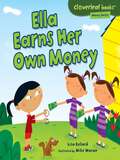
By Lisa Bullard. 2017
How should we handle our money? Ella really wants a soccer ball. But she doesn't have enough money to buy…
one. So she decides to earn her own money. Ella cleans the car for her mom, gives the neighbor's dog a bath, and sells bracelets to her friends to earn cash. Will she have enough money to buy the ball in the end? Read this book to find out! These simple, engaging stories present basic financial literacy concepts, such as saving, spending, borrowing, and comparison shopping to build a foundation for a lifetime of money smarts. Free downloadable series teaching guide available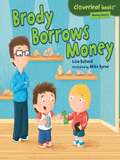
By Lisa Bullard. 2017
How should we handle our money? Brody doesn't have enough money for a cool rock at the gift shop. He…
borrows some money from a friend, but he can't pay it back. Oops! Now Brody's dad has to help out. Sometimes Brody's dad borrows money too. He teaches Brody about when it's OK to borrow money and when it's not. These simple, engaging stories present basic financial literacy concepts, such as saving, spending, borrowing, and comparison shopping to build a foundation for a lifetime of money smarts. Free downloadable series teaching guide available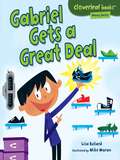
By Lisa Bullard. 2017
How should we handle our money? Gabriel really wants to buy some fancy Fast Kids shoes. But his mom says…
they can spend no more than thirty dollars. Gabriel searches for a great deal on the shoes. He looks online, goes to the shoe store, and checks a discount store too. Will he find the shoes at a price he can afford? Read this book to find out! These simple, engaging stories present basic financial literacy concepts, such as saving, spending, borrowing, and comparison shopping to build a foundation for a lifetime of money smarts. Free downloadable series teaching guide available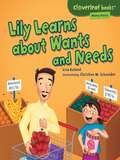
By Lisa Bullard. 2017
How should we handle our money? Lily wants a new bike. And a new raincoat. And ice cream. But how…
many of these things does she need? As Lily and her dad drive around town, Lily soon discovers that wants and needs are different things. She picks out which things people have to have. She might even remind her dad that he doesn't need root beer! Learn how to be wise about money! These simple, engaging stories present basic financial literacy concepts, such as saving, spending, borrowing, and comparison shopping to build a foundation for a lifetime of money smarts. Free downloadable series teaching guide available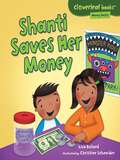
By Lisa Bullard. 2017
How should we handle our money? Shanti wants to try the Monster Ride. It's the wildest ride at Fun Park!…
But the Monster costs money. So Shanti makes a special save jar. She tries not to spend all her allowance. She even helps her busybody brother study! But will Shanti save enough for a turn on the Monster? Read this book to find out! These simple, engaging stories present basic financial literacy concepts, such as saving, spending, borrowing, and comparison shopping to build a foundation for a lifetime of money smarts. Free downloadable series teaching guide available
By Tonya Bolden. 2014
"Recounts the story of the 1914 disappearance of eleven-year-old Sarah Rector, an African American who was part of the Creek…
Indian people and whose land had made her wealthy, and what it reveals about race, money, and American society." -- Provided by publisher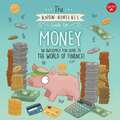
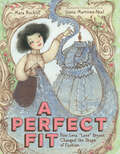
By Mara Rockliff. 2022
"Discover how the Lane Bryant clothing brand changed the way we buy clothes forever by celebrating bodies of all shapes…
and sizes in this inclusive picture book biography of a Lithuanian immigrant with a brilliant eye for fashion and business." -- Provided by publisher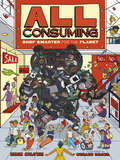
By Erin Silver. 2024
Our shopping culture isn't an obvious polluter. There's always more to buy, buy, buy. Kids love trendy clothes, the latest…
electronics, fast food and even plastic gift cards. Sales draw us in, shiny new gadgets have us going ga-ga and personalized pop-up ads on our social media feeds have us frantically buying things—and throwing them out—without a second thought. You can't see the pollution the way you can see smog in the air or a forest that's been chopped down. But our buying habits and obsession with the latest and greatest are affecting the planet. All the things we need, want and gotta have are responsible for big environmental problems. But making small changes in what and how often you buy can have an impact. All Consuming shows the pros and cons of making different choices when it comes to buying the things you love. It also shines a spotlight on kids who are bringing about change and offers ways you can help out too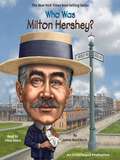
By James Buckley. 2016
Discover the man behind the chocolate bar! Milton Hershey’s life was filled with invention and innovation. As a young man,…
he was not afraid to dream big and work hard. Eventually, he learned the secret to mass-producing milk chocolate and the recipe that gave it a longer, more stable shelf life. He founded a school for those who didn’t have access to a good education and an entire town for his employees. Both his chocolate empire and his great personal legacy live on today